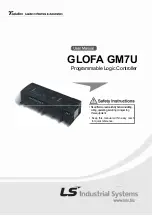
CHAPTER 10 SERIAL INTERFACE FUNCTION
User’s Manual U14492EJ3V0UD
467
(5) Reception errors
The three types of error flags of parity errors, framing errors, and overrun errors are affected in
synchronization with reception operation. As a result of data reception, the PEn, FEn, and OVEn flags of the
ASISn register are set (1) and a reception completion interrupt request (INTSRn) is generated at the same
time.
The contents of error that occurred during reception can be detected by reading the contents of the PEn,
FEn, and OVEn flags of the ASISn register during the INTSRn interrupt servicing.
The contents of the ASISn register are reset (0) by reading the ASISn register (if the next receive data
contains an error, the corresponding error flag is set (1)).
Table 10-7. Reception Error Causes
Error Flag
Reception Error
Causes
PEn
Parity error
The parity specification during transmission did not match
the parity of the reception data
FEn
Framing error
No stop bit was detected
OVEn
Overrun error
The reception of the next data was completed before data
was read from the reception buffer
(6) Parity types and corresponding operation
A parity bit is used to detect a bit error in communication data. Normally, the same type of parity bit is used at
the transmission and reception sides.
(a) Even parity
<1> During transmission
The parity bit is controlled so that number of bits with the value “1” within the transmit data including
the parity bit is even. The parity bit value is as follows.
•
If the number of bits with the value “1” within the transmit data is odd: 1
•
If the number of bits with the value “1” within the transmit data is even: 0
<2> During reception
The number of bits with the value “1” within the receive data including the parity bit is counted, and a
parity error is generated if this number is odd.















































